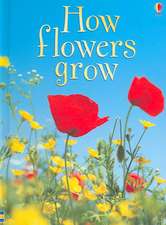The Lichen-Forming Fungi
Autor D. L. Hawksworthen Limba Engleză Paperback – sep 1984
Preț: 380.25 lei
Nou
Puncte Express: 570
Preț estimativ în valută:
72.76€ • 75.97$ • 60.08£
72.76€ • 75.97$ • 60.08£
Carte tipărită la comandă
Livrare economică 15-29 aprilie
Preluare comenzi: 021 569.72.76
Specificații
ISBN-13: 9780216916340
ISBN-10: 0216916348
Pagini: 158
Ilustrații: VIII, 158 p. 67 illus.
Dimensiuni: 152 x 229 x 9 mm
Greutate: 0.23 kg
Ediția:1984
Editura: Springer Us
Colecția Springer
Locul publicării:New York, NY, United States
ISBN-10: 0216916348
Pagini: 158
Ilustrații: VIII, 158 p. 67 illus.
Dimensiuni: 152 x 229 x 9 mm
Greutate: 0.23 kg
Ediția:1984
Editura: Springer Us
Colecția Springer
Locul publicării:New York, NY, United States
Public țintă
ResearchCuprins
1. The Lichen Habit.- 1.1 History.- 1.2 Defining ‘lichen’.- 1.3 Fungus-alga associations.- 1.4 Three- and four-membered symbioses.- 1.5 Mycobionts in lichens.- 1.6 Photobionts in lichens.- 1.7 Taxonomic concepts.- 2. Thallus Structure.- 2.1 Morphology.- 2.2 Environmental modifications.- 2.3 Tissue types.- 2.4 Attachment organs.- 2.5 Cyphellae and pseudocyphellae.- 2.6 Cephalodia and the role of the bionts in morphogenesis.- 2.7 Culture and synthesis.- 3. Reproduction.- 3.1 Ascomata.- 3.2 Ontogeny.- 3.3 Hamathecia.- 3.4 Asci.- 3.5 Ascospores.- 3.6 Conidiomata.- 3.7 Vegetative propagules.- 3.8 Evolutionary trends in reproductive strategies.- 4. Dispersal, and Establisment Growth.- 4.1 Ascospore discharge and dispersal.- 4.2 Ascospore germination.- 4.3 Photobiont reproduction and dispersal.- 4.4 Photobiont recognition and selection.- 4.5 Asexual propagule dispersal and establishment.- 4.6 Thallus growth.- 5. Metabolism and Physiology.- 5.1 Introduction 5.- 5.2 Water relations.- 5.3 Light and photosynthesis.- 5.4 Factors affecting photosynthetic rate.- 5.5 Carbon transfer.- 5.6 Nitrogen fixation.- 5.7 Mineral nutrition.- 5.8 Heavy metals.- 5.9 Ecophysiology.- 5.10 Seasonal variation.- 5.11 Tolerance of temperature extremes.- 6. Ecology and Sociology.- 6.1 Limiting substratum factors.- 6.2 Limiting environmental factors.- 6.3 Lichen-substratum interfaces.- 6.4 Weathering and pedogenesis.- 6.5 Competition and succession.- 6.6 The sociological approach.- 6.7 Corticolous communities.- 6.8 Lignicolous communities.- 6.9 Saxicolous communities.- 6.10 Marine and maritime communities.- 6.11 Aquatic communities.- 6.12 Terricolous communities.- 6.13 Man-made substrata.- 6.14 Biodeterioration.- 6.15 Substratum amplitude.- 6.16 Ecology and speciation.- 6.17 Interactions with otherorganisms.- 7. Biogeography.- 7.1 World.- 7.2 Plate tectonics.- 7.3 Centres of diversity.- 7.4 Factors limiting distribution.- 7.5 European patterns.- 7.6 British patterns.- 7.7 Effect of man on patterns.- 8. Secondary Metabolites.- 8.1 Biosynthesis.- 8.2 Microchemical determination.- 8.3 Location and concentration.- 8.4 Systematic value.- 8.5 Chemical hybrids.- 8.6 Role of lichen products.- 8.7 Antibiotic properties and medicinal effects.- 8.8 Dyeing.- 8.9 Perfumes.- 9. Environmental Monitoring.- 9.1 Air pollution.- 9.2 Heavy metals.- 9.3 Radionuclides.- 9.4 Ecological continuity.- 9.5 Lichenometry.- 9.6 Potential uses.- FURTHER READING.




